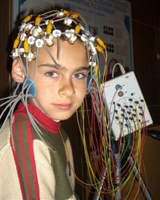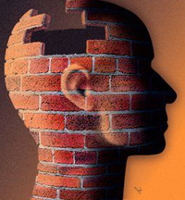Coma is a state at which a violation of the central nervous system occurs, which leads to the oppression of consciousness. The most frequent reasons leading to the development of coma are head injuries, poisonous substances, endocrine disorders.
Content
The concept of coma
 Coma (translated from Latin means «deep sleep») - This is the condition of the complete loss of consciousness, from which the patient cannot bring any stimuli. Coma arises when violating the activity of a complex brain system, which controls the consciousness and life of a person when he wakes. Violation of this system can occur due to injury, disease or poisoning.
Coma (translated from Latin means «deep sleep») - This is the condition of the complete loss of consciousness, from which the patient cannot bring any stimuli. Coma arises when violating the activity of a complex brain system, which controls the consciousness and life of a person when he wakes. Violation of this system can occur due to injury, disease or poisoning.
As often arises, it is difficult to evaluate due to the fact that almost all patients in comatose state pass through various stages of the unconscious state and a reduced reaction to stimuli, but not in all cases the unconscious state means to whom.
Comatous state most often develops due to injuries of the head, poisoning or other reasons that violate the activity of the brain. Most patients who develop a coma is those who have suffered severe injuries of the head or very seriously ill, are in a true comatose state only within a few days. Full recovery after staying in coma is either impossible, or it takes weeks, months and even years. At the time of coma, it is in fact it impossible to make a forecast of the health state of the patient for a long period. The forecast depends on the reason that caused someone, the severity of violations, the duration of the comatose state and on the success of treatment. As a rule, the longer it fails to withdraw a patient from the comatose state, the worse the forecast.
Death, however, rarely comes from the loss of consciousness, even if the coma in the patient lasts years. Achievements in other areas of medicine make it possible to extend the life of many patients who are in comatose state. Thanks to these achievements, a number of new methods of treatment intended to restore the ability of patients derived from coma and having a light or average degree of brain damage. In addition, the achievements of medicine raised the issues of morality on how best to treat comatose patients suffering from severe, irreversible brain damage.
Causes of coma
Coma can be called in any substance, illness or injury that lead to a violation of the work of a brain controlling human activity.
Coma may arise as a result of inhalation or swallowing such poisonous substances as carbon monoxide or lead. Some combinations of substances (for example, alcohol and soothing means) can also cause. Children giving a strong allergic response to chemicals contained in some foods and drugs can fall into the state of the coma, swallowing them.
The diseases most often causing to whom include meningitis (infectious diseases of the shells of the head and spinal cord), encephalitis (brain inflammation), seizures and substance disorders such as diabetes mellitus and hypoglycemia. Most often, who are caused by those diseases that violate the flow of oxygen in the brain. These include congenital heart disease, sickle cell anemia. In addition, to whom can cause liver damage (sometimes arising in the flight syndrome), hydrocephalus (brain watercolor, it is characterized by a cluster of fluid in the brain), paralysis, pronounced decrease in the function of the thyroid gland and brain tumor.
Head and spine injury often calls anyone, especially often this happens during car accidents and sports injuries. Unfortunately violating the supply of brain with oxygen and causing to whom include suffocation, drowning, suffocation and poisoning substances of choking action.
Basic symptoms of coma
Signs and symptoms of the comatose state can be divided into groups in accordance with the degree of violation of the reaction to stimuli.
Drowsiness
Lethargy, drowsiness, loss of interest in the surrounding, man is easily falling asleep and is also easily waking up, while adequately answers questions and does not need constant stimulation to be awake, not to sleep.
Stupor (stupor)
Depression, disorientation, delirium (nonsense, hot). The patient falls asleep if he is constantly not wake up, but it is still possible to wake up, he answers simple questions, but sometimes the nefple.
Deep stupor (patient is in a half-conscious state). A strong painful stimulus is needed to wake a person who can moan while trying to wake him up and trying to get rid of the stimulus.
Coma
Eyes all the time closed, the patient can not be woken even with the help of a strong painful stimulus, his attempts to get rid of the annoying stimulus are inappropriate and do not match the goals - it is or has limbs in unusual positions (for example, hands bent on the chest, brushes are compressed in fists, legs stretched out) , or twisted and accepts intrauterine position of the embryo.
Deep Coma
The patient does not respond to the weak, nor on strong irritants, reflexes are missing, the muscles are relaxed and sluggish, the muscular tone is absent.
The death of the brain
Full absence of brain activity, determined when measuring its electrical activity. Breathing and blood circulation at this stage can only be supported using special equipment.
On any of these stages, the pulse may be less likely than normal, and blood pressure exceed normal indicators. The patient's breathing can be rapid and superficial (condition called hyperventilation). As a rule, in many patients who are in a coma, pupils are unusually expanded and can only look forward even when the doctor turns the head of the patient from one side to another. In the case of deep coma, breathing stops may occur.









